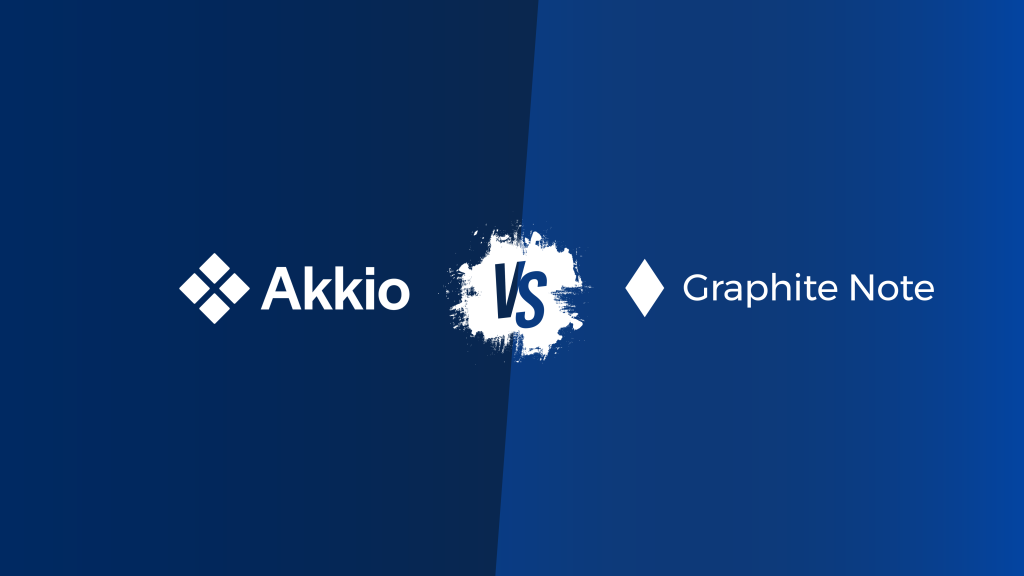Top Data Cleaning Tools to Streamline Your Analysis
When it comes to data analysis, data cleaning isn’t glamorous. Making sure you have data clean is one of the most important steps. Clean data ensures excellent results. Your data analysis will be compromised without clean and reliable data. This can lead to inaccurate insights and flawed decisions. There are many data cleaning tools and data cleaning techniques that can streamline and automate this process. Using tools to get your data clean saves you time and ensures the quality of your data. Let’s look at the best data cleaning tools of 2024, discuss their benefits, and give you tips on how to use them to improve your data cleansing process.
The Importance of Using Data Cleansing Tools
The data cleansing process is also known as data scrubbing. Data cleansing identifies, corrects, or removes errors, inconsistencies, and inaccuracies in your datasets. Data errors can occur due to human error, system glitches, data integration issues, or other factors. This is so called “dirty data.” The benefits of ensuring you get your data clean include:
- Data quality and integrity: Data cleansing tools ensure your data quality and integrity. If you don’t use data cleansing tools, you risk analyzing and making critical decisions using unreliable, flawed data. This can have severe consequences. The wrong insights could lead to poor business outcomes, financial losses, and damaged reputation.
- Data accuracy and reliability: Data cleansing tools play an important role in maintaining the accuracy and reliability of your data. They help you identify and rectify errors, inconsistencies, and inaccuracies in your datasets. This ensures that the data you rely on for decision making is trustworthy and of high quality. Using data cleaning tools, you and your data analysts can enhance your data management processes. Data cleansing tools also help you improve operational efficiency. You also reap the benefits of better business intelligence.
- Improved decision making: When you have your data clean, you can be sure of improved decision-making. Using data cleansing tools, you can reduce errors and inconsistencies. You’re ensuring that the data you analyze and base decisions on is accurate and reliable. This leads to more informed and confident decision-making. You can make strategic decisions based on reliable data. That leads to improved business outcomes and building a competitive edge in the market.
- Enhanced customer satisfaction: When you have your data clean, your insights are more accurate, which leads to enhanced customer satisfaction. Data cleansing helps to eliminate duplicate records and incorrect customer information. This includes contact information, email addresses, or other data. You’re equipped to create personalized and targeted communication for your clients. Data cleansing helps you support happier customers who feel understood and valued by your business. You can provide better customer service, build stronger relationships, and increase customer loyalty.
- Regulatory compliance: Data cleansing is also important for compliance with regulations. Many industries have strict regulations governing data privacy and security. Using data cleansing tools helps you ensure compliance. Data cleaning tools help you avoid legal repercussions and hefty fines. Data cleansing helps you maintain data integrity and protect sensitive information. This ensures that you meet the necessary regulatory requirements.
- Increased efficiency: Data cleansing also contributes to increased efficiency. Cleaning data manually is a time-consuming process that often requires significant human resources. Data cleansing tools automate this process, saving valuable time and resources. Automating data cleansing, you can streamline your operations. Similarly, you reduce manual effort, and improve overall efficiency. This improves your data science outcomes, ensures you have your data clean, and resolves key data issues for you.
Streamlining Data Cleaning: Best Practices for Success
Now that we’ve established the importance of data cleansing, let’s explore some best practices to ensure successful data cleaning:
- Identify data quality issues: Analyze and assess your data set to identify inconsistencies, data errors, bad data, data entry errors, and other quality issues. Understanding the specific problems within your data sets will help you choose the right data cleaning tools and techniques. Bad data can detrimentally affect your outcomes.
- Establish data cleaning standards: Define clear standards and guidelines for data cleaning to maintain consistency and ensure that everyone involved follows the same processes. This helps you streamline the data cleansing process and ensure that your data is cleaned consistently across your business. Setting benchmarks for your data points will ensure data accuracy and that good data is used for your machine learning. High quality data is needed to ensure good results from your data analytics process.
- Choose the right data cleaning tool: With a multitude of data cleaning tools available, it is important to select the one that best suits your business’ needs. Consider your data cleansing tool’s functionality, ease of use, scalability, and compatibility with your existing systems. Choose the right tool to ensure that you can effectively and efficiently clean your data.
- Automate where possible: Use automation capabilities offered by data cleansing tools to streamline the process and reduce manual effort. This will save you time and minimize the risk of human error. Automation can help you clean large volumes of data quickly and accurately. The data preparation process need not be so cumbersome. Automation can help to rectify issues and weed out duplicate data or duplicate rows, null values, and more, from any data source. This will help you ensure data accuracy throughout, fill in missing data, and improve your results. This also helps to reduce the advent of irrelevant observations, ensures the use of relevant information, and improves your business intelligence. Where a data column is empty or only partially filled, automation can help to fill in missing data. Data cleansing helps you ensure good results for your data analysis process.
- Regularly monitor and update: Data quality is an ongoing effort. Continuously monitor your data for any new errors or issues and update your data cleansing processes accordingly. Regularly reviewing and updating your data cleansing practices will help maintain data integrity and ensure that your data remains accurate and reliable. Remember: the quality of your data will affect the outcomes of your data analysis process.
The Ultimate Guide to Data Cleansing Tools
With the exponential growth of data in recent years, the need for effective data cleansing tools has become more pronounced than ever before. Data analysts use data cleansing tools to clean data from an external data source, resolve structural errors, and improve decision making.
Comparing the Top Data Cleansing Tools of 2024
- Tool 1 – DataCleaner: DataCleaner has a user-friendly interface and powerful data cleansing capabilities, DataCleaner helps you identify and correct anomalies, duplicates, and inconsistencies in your data.
- Tool 2 – OpenRefine: OpenRefine is an open-source data cleaning tool that provides a seamless experience for exploring, cleaning, and transforming large datasets. Its intuitive interface and extensive set of functions make it a popular choice among data professionals.
- Tool 3 – RapidMiner: Combining machine learning and data cleaning capabilities, RapidMiner enables you to automate the process of cleaning and prepping your data for analysis. Its advanced algorithms and automation features make it a valuable tool for organizations dealing with large and complex datasets.
- Tool 4 – Alteryx Designer Cloud: Trifacta offers a user-friendly interface and a range of features that simplify the process of transforming, cleaning, and enriching your data.
- Tool 5 – Talend Data Preparation: Talend Data Preparation enables you to cleanse, standardize, and transform their data using an intuitive visual interface.
Unlocking Data Potential: How Data Cleansing Tools Drive Business Success
Effective data cleansing tools are not just about removing errors; they play a vital role in unlocking the true potential of your data and driving business success. Here are some ways in which these tools can benefit your organization:
- Identify data patterns: Data cleansing tools help you discover patterns and insights hidden within your data, enabling you to make data-driven decisions and uncover valuable opportunities. Identifying trends and correlations, you can gain a competitive edge and optimize your business strategies.
- Improved data visualization: Clean and accurate data makes it easier to create visually appealing and informative data visualizations that effectively communicate insights to stakeholders. With data cleansing tools, you can ensure that your visualizations are based on reliable and trustworthy data, enhancing your credibility.
- Enhanced collaboration: Data cleansing tools enable data scientists, analysts, and business users to collaborate more effectively by providing them with a common platform for data cleansing and analysis. These tools facilitate seamless data sharing, version control, and collaboration, fostering a culture of teamwork and innovation.
- Augmented data analytics: Data cleansing tools empower you to perform more sophisticated data analytics tasks, such as predictive modeling and machine learning. With accurate and reliable data, you can uncover valuable insights, predict future trends, and make informed business decisions.
Choose the Right Data Cleansing Tool for Analytics
Different organizations have different requirements and priorities, so it is essential to consider these factors when making your decision.
Maximizing Analytics Efficiency: Selecting the Best Data Cleansing Tool
Here are some key factors to consider when choosing a data cleansing tool for your analytics:
- Functionality: Assess the tool’s features and capabilities to ensure they align with your specific analytical requirements.
- User-friendliness: Look for a tool that offers an intuitive interface, enabling both technical and non-technical users to leverage its capabilities.
- Integration: Consider how well the tool integrates with your existing analytics stack and business intelligence tools to ensure a seamless workflow.
- Scalability: If you anticipate your data volumes will grow significantly in the future, choosing a scalable data cleansing tool will save you from potential issues down the line.
Data Cleansing for Analytics: A Step-by-Step Guide to Success
Now that you have selected the right data cleansing tool for your analytics needs, let’s explore a step-by-step guide to help you achieve success:
- Define your goals: Clearly outline your analytical goals and objectives to ensure that your data cleansing efforts are geared towards producing desired outcomes.
- Data profiling: Perform a thorough analysis of your data to identify its unique characteristics, patterns, and quality issues.
- Data preprocessing: Cleanse and preprocess your data using the selected data cleansing tool, addressing errors, inconsistencies, and missing values.
- Feature engineering: Enrich your data by creating new variables or features that are more meaningful and relevant to your analysis.
- Validation and testing: Evaluate the quality and integrity of your cleansed data to ensure it meets your analytical requirements.
- Iterate and improve: Continuously monitor and enhance your data cleansing processes to adapt to changing data characteristics and requirements.
Streamlining Data Preparation: Techniques for Effective Data Transformation
Here are some techniques to streamline and enhance your data preparation and transformation process:
- Standardization: Ensure consistent formatting and structure across your data to eliminate discrepancies and improve accuracy.
- Data integration: Combine data from various sources and formats, allowing for a holistic view and comprehensive analysis.
- Data enrichment: Enhance your data by adding external information, such as demographic data or market trends, to create a more comprehensive and insightful dataset.
- Data normalization: Transform your data into a standardized format, eliminating redundancies and ensuring compatibility for analysis.
Using AI for Data Cleaning and Preparation: A Step-by-Step Guide
Artificial Intelligence (AI) can play a significant role in data cleaning and preparation. Here’s a step-by-step guide on how to use AI for these tasks:
- Data analysis: Use AI-powered tools to perform in-depth data analysis, identifying patterns, trends, and quality issues.
- Automated cleaning: Deploy AI algorithms to automate the data cleaning process, eliminating errors and anomalies at scale.
- Advanced transformation: AI capabilities help you to perform complex data transformations, generating new features and insights beyond traditional methods.
- Continuous learning: Implement AI algorithms that learn and adapt to changing data characteristics, improving accuracy and efficiency over time.
- Human-in-the-loop: Maintain a human touch by involving data experts who can validate and interpret the results generated by AI algorithms.
Data cleaning is an essential aspect of any data analysis strategy. When you have your data clean, your insights will be better.




